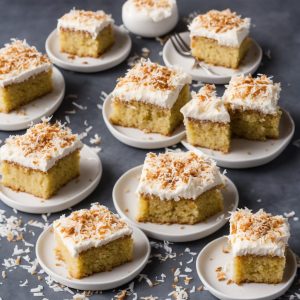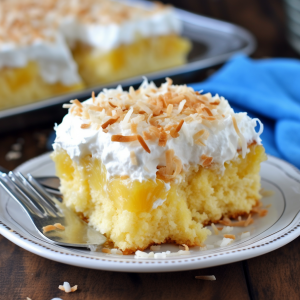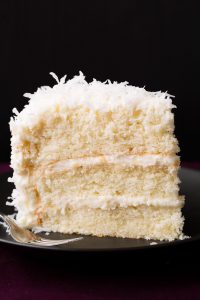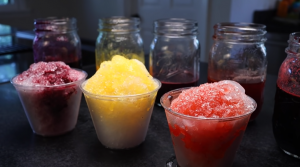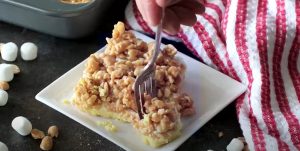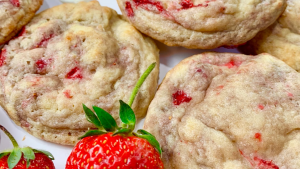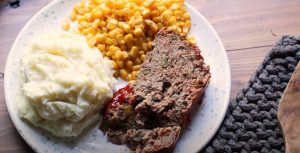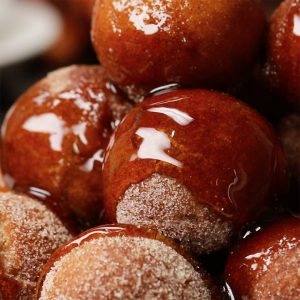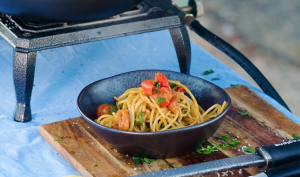This Old-Fashioned Coconut Cake recipe is a delightful dessert that is both nostalgic and delicious. It is a moist and fluffy cake layered with coconut frosting and sprinkled with shredded coconut, bringing back the classic flavor of coconut infused in every bite.
The primary ingredients for this recipe are readily available in most homes. However, one ingredient that may not be commonly found at home is cream of tartar, used in the frosting to stabilize the egg whites and give them volume. You can easily find it in the baking aisle at the supermarket.
Ingredients for Old-Fashioned Coconut Cake
White sugar: This is the sweetener for the cake and the frosting.
Eggs: These are used in the cake for structure and richness.
Milk: Adds moisture to the cake batter.
Butter: Contributes to the flavor and texture of the cake.
All purpose flour: This is the structure of the cake.
Baking powder: The leavening agent that helps the cake rise.
Vanilla extract: An essential flavoring in the cake and the frosting.
Water: Used in the frosting to dissolve the sugar.
Cream of tartar: A stabilizer for the egg whites in the frosting.
Coconut: The star ingredient, adding flavor and texture to the cake.
One reader, Electra Thacker says:





This old-fashioned coconut cake recipe is a true winner! The cake turned out moist and flavorful, and the frosting was heavenly. The coconut added a delightful touch. It was a hit at my family gathering, and everyone asked for the recipe. I'll definitely be making this again!
Techniques Required for Making Old-Fashioned Coconut Cake
How to bake the cake: This technique involves mixing the batter, dividing it into pans, and baking it until a toothpick inserted into the center comes out clean.
How to make the frosting: This technique involves boiling sugar and water, beating egg whites, and carefully incorporating the hot sugar mixture to create a fluffy frosting.
How to assemble the cake: This technique involves layering the cooled cake, frosting each layer, and then completing the frosting on the sides and top of the cake before adding the coconut.
How To Make Old-Fashioned Coconut Cake Recipe
Serves:
Ingredients
- For Cake:
- 1½ cups white sugar
- 2 eggs
- 4 egg yolks
- 1 cup milk
- ½ cup butter
- 2½ cups all purpose flour
- 1 tbsp baking powder
- 1 tsp vanilla extract
- For Frosting:
- 1¾ cups white sugar
- ½ cup water
- 4 egg whites, room temperature
- 1 tsp vanilla extract
- ½ tsp cream of tartar
- 2 cups coconut, sweetened and flaked, or as needed
Instructions
- Preheat the oven to 350 degrees F. Grease three 9-inch round cake pans.
- Mix sugar, eggs, and egg yolks together in a mixing bowl using an electric mixer for about 5 minutes until light and fluffy.
- Heat milk and butter in saucepan over low heat for 2 to 3 minutes until butter melts. Remove from heat and let cool slightly.
- Combine flour and baking powder in a bowl. Pour into egg mixture. Add vanilla extract and milk mixture; beat well using an electric mixer. Divide batter evenly among the prepared pans.
- Bake in the preheated oven for 15 to 18 minutes until a toothpick inserted into the center of the cakes comes out clean.
- Let cool in pans for 10 minutes before transferring to wire racks to cool completely.
- Meanwhile, thoroughly clean mixing bowl and beaters. Beat egg whites and cream of tartar with an electric mixer until foamy.
- Bring sugar and water to a boil in a saucepan. Boil for 3 to 4 minutes, until a candy thermometer reads 242 degrees F.
- Beat egg whites on high speed. Carefully pour in hot sugar mixture in the side of the bowl, avoiding the beaters; continue to beat on high for 6 to 8 minutes until stiff peaks form. Stir in vanilla extract.
- Place 1 cooled cake layer on a serving platter and frost the top. Repeat with second and third layers of cake.
- Complete frosting the sides, top, and throughout. Sprinkle coconut on top and smooth onto sides of cake using hands.
Nutrition
- Calcium: 127.1mg
- Calories: 464.0kcal
- Carbohydrates: 77.8g
- Cholesterol: 97.7mg
- Fat: 14.9g
- Fiber: 1.9g
- Iron: 2.0mg
- Monounsaturated Fat: 3.2g
- Polyunsaturated Fat: 0.8g
- Potassium: 156.4mg
- Protein: 6.4g
- Saturated Fat: 9.9g
- Sodium: 131.7mg
- Sugar: 56.2g
- Trans Fat: 0.3g
- Vitamin A: 102.6mcg
- Vitamin C: 0.4mg
Technique Tip: How to Achieve the Perfect Coconut Cake Texture
When frosting the cake, it's helpful to apply a thin 'crumb coat' first. This initial layer of frosting will catch any loose crumbs and prevent them from mixing into your final layer of frosting. After applying the crumb coat, chill the cake for about 15-20 minutes to set the frosting before applying the final, thicker layer. This will result in a cleaner, crumb-free frosting finish. Additionally, when sprinkling the coconut on top and onto the sides of the cake, lightly press the coconut into the frosting to ensure it sticks well.
Time-Saving Tips for Baking Coconut Cake
Plan ahead: Prepare the ingredients and measure them out before starting to save time during the cooking process.
Multi-task: While the cake is baking, you can start preparing the frosting to save time.
Use pre-shredded coconut: Using pre-shredded coconut can save time compared to shredding it yourself.
Organize your workspace: Keep your kitchen organized and clean as you work to avoid wasting time searching for tools and ingredients.
Set a timer: Use a timer to keep track of baking and cooling times, allowing you to focus on other tasks.
Substitute Ingredients For Old-Fashioned Coconut Cake Recipe
white sugar - Substitute with coconut sugar: Coconut sugar has a similar sweetness to white sugar and adds a subtle caramel flavor, which complements the coconut cake well.
eggs - Substitute with flax eggs: Flax eggs can be used as a vegan alternative to eggs in the cake, providing binding properties and moisture.
milk - Substitute with coconut milk: Coconut milk can enhance the coconut flavor in the cake and add richness to the batter.
butter - Substitute with coconut oil: Coconut oil can be used as a dairy-free alternative, and its subtle coconut flavor complements the cake.
all purpose flour - Substitute with almond flour: Almond flour can be used for a gluten-free option and adds a nutty flavor to the cake.
baking powder - Substitute with baking soda and cream of tartar: This combination can act as a leavening agent similar to baking powder.
vanilla extract - Substitute with coconut extract: Coconut extract can enhance the coconut flavor in the cake and provide a tropical aroma.
coconut - Substitute with toasted almonds: Toasted almonds can provide a nutty crunch similar to coconut and add a delightful texture to the cake.
cream of tartar - Substitute with lemon juice or white vinegar: Both lemon juice and white vinegar can provide acidity and help stabilize the frosting, similar to cream of tartar.
coconut - Substitute with chopped macadamia nuts: Chopped macadamia nuts can add a rich, buttery flavor and a satisfying crunch to the frosting.
Presentation Ideas for a Stunning Coconut Cake
Elevate the cake layers: Carefully stack and align the cake layers to create a visually appealing and balanced presentation. Ensure that each layer is evenly placed to create a stunning visual impact.
Garnish with fresh coconut: Sprinkle freshly grated coconut on top of the cake to add a pop of natural texture and flavor. The use of fresh coconut will enhance the overall presentation and provide a delightful tropical touch.
Incorporate edible flowers: Introduce vibrant and colorful edible flowers, such as orchids or pansies, to add a touch of elegance and sophistication to the cake. The addition of edible flowers will elevate the visual appeal and create a captivating presentation.
Create a coconut-inspired design: Use the frosting to create a beautiful coconut-inspired design on the cake's surface. This could include intricate swirls, waves, or patterns that reflect the essence of coconut, adding an artistic and thematic element to the presentation.
Accent with gold leaf: For a luxurious and extravagant touch, delicately place edible gold leaf on the cake's surface. The shimmering gold accents will elevate the presentation, exuding opulence and refinement.
Serve on a bed of coconut shavings: Present the cake on a bed of delicate coconut shavings to create a visually stunning and cohesive display. The use of coconut shavings as a base will complement the cake's flavors and tie the presentation together.
Utilize a cake stand: Elevate the cake on a decorative cake stand to showcase its grandeur and create a focal point. The use of a stylish cake stand will enhance the overall presentation and add a touch of sophistication to the dessert.
Incorporate ambient lighting: Utilize soft, warm lighting to highlight the cake's features and create an inviting ambiance. Thoughtfully placed lighting can accentuate the presentation, making the cake a captivating centerpiece on the dining table.
Essential Tools for Baking an Old-Fashioned Coconut Cake
- Mixing bowl: A large, sturdy bowl used for mixing ingredients and preparing batters or doughs.
- Electric mixer: A kitchen appliance used to mix, beat, and whip ingredients, typically with interchangeable beaters or attachments.
- Saucepan: A deep cooking pan with a long handle, used for heating and preparing sauces, soups, and other liquids.
- Cake pans: Round or square pans specifically designed for baking cakes, with straight sides and flat bottoms.
- Wire racks: Metal racks used for cooling baked goods, allowing air to circulate around the food to prevent sogginess.
- Candy thermometer: A specialized thermometer used to measure the temperature of sugar syrups and candies during cooking.
- Spatula: A flat, flexible utensil used for spreading, smoothing, and lifting ingredients, such as frosting or batter.
- Food processor: A versatile kitchen appliance used for chopping, blending, and pureeing ingredients quickly and efficiently.
Storing and Freezing Old-Fashioned Coconut Cake
To store the old-fashioned coconut cake, place it in an airtight container or wrap it tightly with plastic wrap. It can be kept at room temperature for up to 3 days.
For longer storage, you can refrigerate the cake for up to 1 week. Make sure to cover it well with plastic wrap or aluminum foil to prevent it from drying out or absorbing other flavors from the fridge.
If you want to freeze the coconut cake, follow these steps:
- Cut the cake into individual slices or leave it whole, depending on your preference.
- Wrap each slice or the whole cake tightly with plastic wrap, making sure there are no air pockets.
- Place the wrapped cake in a freezer-safe container or a resealable plastic bag, removing as much air as possible.
- Label the container or bag with the date and freeze for up to 3 months.
To thaw the frozen coconut cake:
- For individual slices, remove them from the freezer and let them thaw at room temperature for about 30 minutes to 1 hour.
- For a whole cake, transfer it from the freezer to the refrigerator and let it thaw overnight. Once thawed, you can bring it to room temperature before serving, if desired.
Note: The texture of the frosting may change slightly after freezing and thawing, but the overall taste should remain delicious.
How To Reheat Leftover Coconut Cake
Preheat your oven to 350°F (175°C). Place the leftover coconut cake on a baking sheet and cover it loosely with aluminum foil. Bake for about 10-15 minutes, or until the cake is heated through. This method helps to retain the moisture in the cake and prevents it from drying out.
If you have a microwave-safe plate, you can reheat individual slices of coconut cake in the microwave. Place a slice on the plate and microwave it on high power for 20-30 seconds, or until it's warm. Be careful not to overheat the cake, as it can become rubbery or tough.
For a quick and easy method, you can reheat the coconut cake in a steamer basket over boiling water. Place the cake slices in the steamer basket and cover it with a lid. Steam for about 5-7 minutes, or until the cake is heated through. This method helps to keep the cake moist and fluffy.
If you want to add a little extra flavor to your leftover coconut cake, try toasting the coconut topping. Preheat your oven to 350°F (175°C) and spread the coconut on a baking sheet. Toast for 5-7 minutes, or until the coconut is golden brown and fragrant. Sprinkle the toasted coconut over the reheated cake for a delicious crunch.
For a more indulgent treat, you can transform your leftover coconut cake into a delicious bread pudding. Cut the cake into small cubes and place them in a baking dish. In a separate bowl, whisk together eggs, milk, sugar, and a pinch of cinnamon. Pour the mixture over the cake cubes and let it soak for about 30 minutes. Bake the bread pudding in a preheated oven at 350°F (175°C) for 30-40 minutes, or until it's set and golden brown on top.
Random Fact: The Origins of Coconut Cake
The coconut cake is a classic dessert that has been enjoyed for generations. It is a popular choice for special occasions and gatherings, and its rich, sweet flavor makes it a beloved treat for many. The process of making a coconut cake from scratch can be a labor of love, but the end result is always worth it. Whether it's for a birthday, holiday, or just a simple gathering, a homemade coconut cake is sure to be a hit with friends and family.
Is Making Old-Fashioned Coconut Cake at Home Cost-Effective?
This old-fashioned coconut cake recipe is relatively cost-effective for a household. The main ingredients, such as sugar, eggs, flour, and coconut, are commonly found in most kitchens. However, the use of multiple eggs and butter might slightly increase the cost. The approximate cost for a household of 4 people is around $15-$20, considering the quantity and quality of ingredients. The overall verdict rating for this recipe is 8/10, as it yields a delicious and classic dessert that can be enjoyed by the whole family without breaking the bank.
Is Old-Fashioned Coconut Cake Healthy or Unhealthy?
The old-fashioned coconut cake recipe is a delightful treat, but it's not the healthiest option due to its high sugar and fat content. The recipe calls for a significant amount of white sugar, butter, and egg yolks, which can contribute to excessive calorie intake and potential health issues if consumed regularly. Additionally, the frosting contains a large amount of sugar, which can lead to blood sugar spikes and dental problems.
However, there are ways to make this recipe healthier without compromising its delicious taste:
- Reduce the amount of sugar in both the cake and frosting by using natural sweeteners like honey, maple syrup, or dates
- Replace some of the all-purpose flour with whole wheat flour or almond flour for added fiber and nutrients
- Use low-fat milk or plant-based milk alternatives to reduce the overall fat content
- Opt for a lighter frosting, such as a whipped cream cheese frosting or a yogurt-based frosting, to cut down on sugar and fat
- Incorporate fresh fruit, like strawberries or raspberries, into the cake layers for added flavor and nutrition
- Reduce the amount of coconut used for garnishing or replace it with toasted nuts for a healthier crunch
Editor's Thoughts: Why Old-Fashioned Coconut Cake is a Must-Try
The old-fashioned coconut cake recipe is a classic and timeless dessert that is sure to impress. The combination of fluffy cake layers and a luscious coconut frosting creates a delightful treat for any occasion. The method of incorporating egg yolks and whites separately adds richness and lightness to the cake, while the frosting's fluffy texture and coconut flavor perfectly complement the moist cake layers. This recipe is a true crowd-pleaser and a wonderful addition to any dessert table.
Enhance Your Old-Fashioned Coconut Cake Recipe with These Unique Side Dishes:
Alternative Coconut Dessert Recipes to Try
Appetizers and Main Courses to Serve with Coconut Cake
Why trust this Old-Fashioned Coconut Cake Recipe:
This old-fashioned coconut cake recipe is a timeless classic that has been passed down through generations, ensuring its authenticity and deliciousness. The combination of coconut, vanilla extract, and butter creates a rich and indulgent flavor profile. The detailed instructions and precise measurements guarantee a perfect outcome. Additionally, the frosting made with egg whites and sugar results in a light and fluffy texture that complements the cake beautifully. Trust in the tradition and expertise behind this recipe to create a delightful dessert for any occasion.
Was this page helpful?
Have your own special recipe to share? Submit Your Recipe Today!

